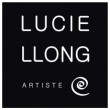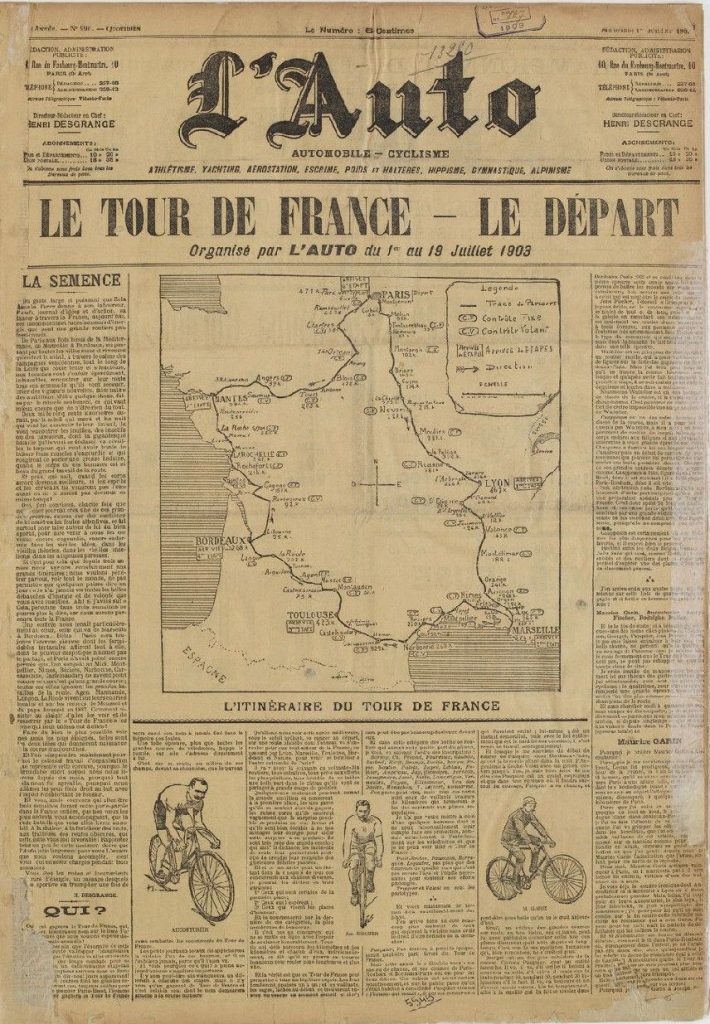I have always struggled to achieve excellence. One thing that cycling has taught me is that if you can achieve something without a struggle it’s not going to be satisfying.
Greg LeMond, triple winner of the Tour de France (1986, 1989,1990)
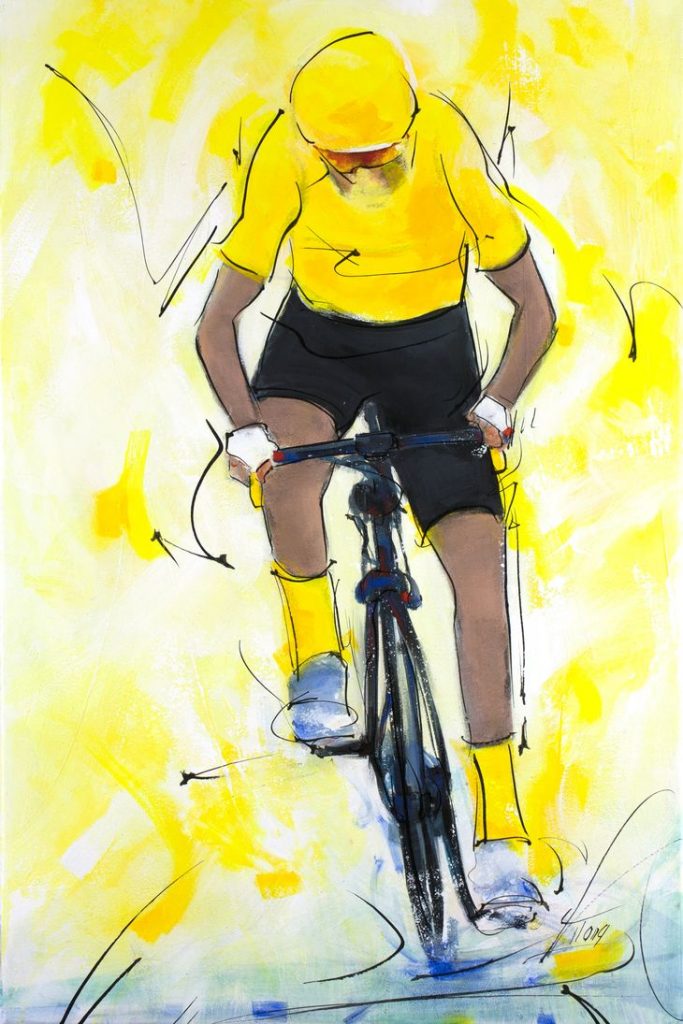
The history of the Yellow Jersey is deeply intertwined with that of the Tour de France, a major cycling race whose origins date back to 1903. At that time, sports were emerging as a recreational activity, and specialized press was developing, driven by the growth of collegiate and associative sports across the Channel, as well as the visionary ideas of modern Olympic Games and sports in schools by Baron Pierre de Coubertin. The Olympic Games in Athens in 1896, followed by the Paris Games in 1900, brought unexpected visibility to sports and cycling (seen as a means of transportation). Popular and recent sports like tennis, inspired by the game of “paume,” and cycling joined forces with ancient disciplines such as athletics and wrestling to establish the foundations of the modern Olympic Games.
While sports in the early 20th century were initially accessible to a wealthy and educated elite, they quickly became democratized. The first multi-sport clubs were established in the late 19th century (such as Le Havre Football Club in 1872, Girondins de Bordeaux in 1881, Stade Français in 1883, Racing Club de France in 1882, etc.), and through their experiences and societal influence, they laid the solid groundwork for nonprofit organisations under the 1901 law that are still in effect today.
Politics, a cycling event and 35,000 more readers
In a France torn apart by the Dreyfus Affair, the foundations of the Tour de France were laid by Henri Desgranges, a former cyclist and the director of the newspaper “L’Auto.” Deeply anti-Dreyfusard, he aimed to boost the sales of his daily newspaper and weaken his Dreyfusard rival, Pierre Giffard, who led “Le Vélo.” Unbeknownst to him, and under the guise of political and commercial opposition, he had just created a major sporting competition in the history of sports.
The first Tour de France was a resounding popular success, with sales of “L’Auto” soaring and leaving its rival in dire straits. The race was titanic, covering nearly 2,500 kilometers in 6 stages, connecting the greatest cities of France, including:
Stage 1: Paris – Lyon – 467 km
Stage 2 : Lyon – Marseille – 374 km
Stage 3 : Marseille – Toulouse – 423 km
Stage 4 : Toulouse – Bordeaux – 268 km
Stage 5 : Bordeaux – Nantes – 394 km
Stage 6 : Nantes – Paris – 471 km
Due to the media success of this first Tour de France, Henri Desgranges decided to continue the event. Gradually, the Tour started to climb to higher altitudes, traversing the Alpine and Pyrenean roads, until it abruptly came to a halt with the outbreak of World War I in 1914.
The history of the 1st yellow jersey

Traumatized by the horrors and the staggering number of casualties of the Great War, France was attempting to rebuild itself, and this 13th Tour de France, held in a country still devastated and wounded, contributed to bringing a smile back to the French people. The race was highly contested, and an idea emerged to easily identify the race leader: to award them a yellow jersey at each stage, the color of the pages of the organizing newspaper, L’Auto.
Issue number 6812 of L’Auto, sold on Saturday, July 19, 2019, laid out the framework for the Auto’s jersey, which would become the yellow jersey. In the 11th stage of this Tour, held in Grenoble, Eugène Christophe, the leader in the general classification, was presented with a yellow jersey. He became the first cyclist to wear this distinctive jersey, which has now become legendary. One hundred years later, thousands of cyclists have competed and suffered to wear it and cross the finish line with yellow on their shoulders. The Tour has often been tarnished by scandals, but nothing has been able to dampen the popular enthusiasm it inspires.
During that time, the Tour stood out from other cycling competitions due to its grandeur and the difficulty of its stages.

Eugène Christophe, first wearer of the yellow jersey,
mentioned in the newspaper L’Auto on July 19, 1919
(Source: Gallica)
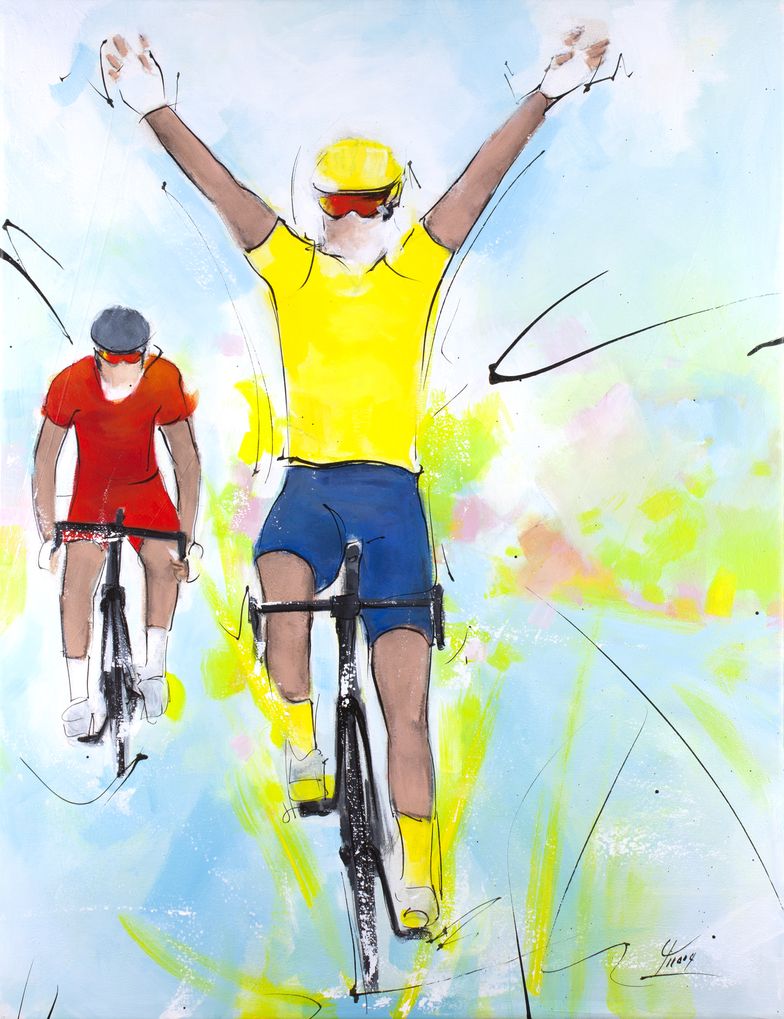
Tour de France feats
The longest stage: 483 km between Bayonne and Les Sables d’Olonne (from 1919 to 1924)
The longest Tour in history: 5745 km in 1926
The smallest margin: 8 seconds between Greg Lemond and Laurent Fignon (1989)
The highest number of completed Tours: 16 Tours – Joop Zoetemelk and Sylvain Chavanel
The highest number of final victories: 5 (Anquetil, Merckx, Hinault, Indurain)
The highest number of podium : Raymond Poulidor – 8
The highest number of stage victories: Eddy Merckx – 34 stages
The highest number of days in the yellow jersey: Eddy Merckx – 111 days
Lcl , partner of the yellow jersey since 1987
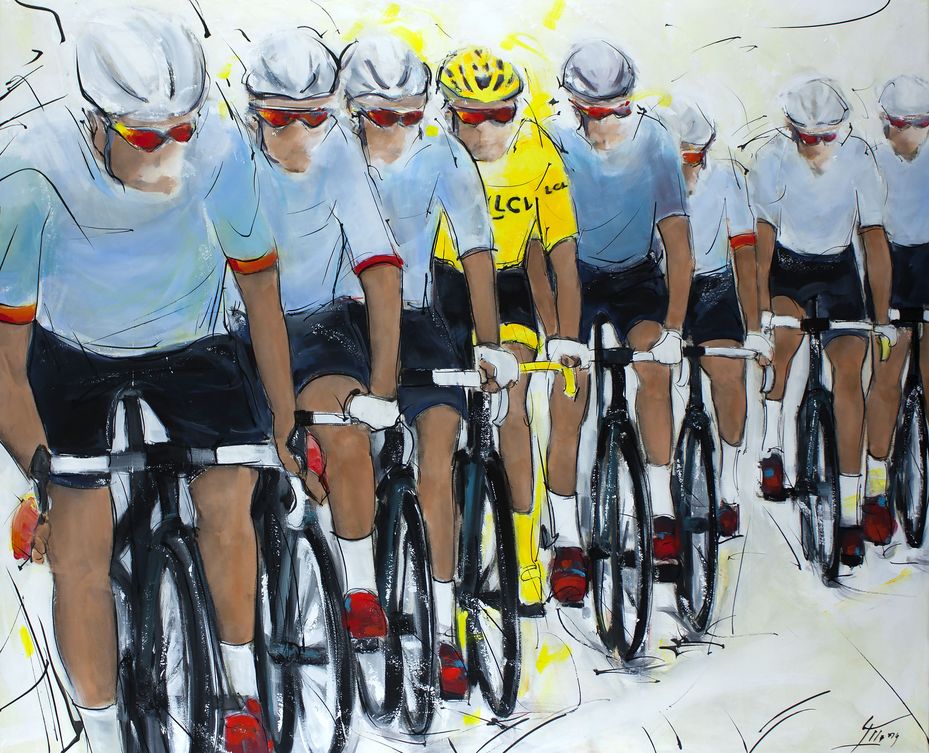
As a partner of the yellow jersey, LCL embodies and shares values of excellence, perseverance, and proximity with those who wear the yellow jersey. Like the Roland Garros tournament, the Tour de France is deeply rooted in our society. Covered by television since 1948 (when less than 1% of households were equipped with TVs), this event has become legendary by combining culture through the beauty and uniqueness of landscapes with sports. Certain rivalries and fierce battles on the asphalt are etched forever in the history of cycling and sports.
The 100th anniversary of the yellow jersey served as the starting point for an exhibition organized by LCL. This special event celebrated the rich history and significance of the iconic yellow jersey in the Tour de France. The exhibition showcased a collection of artwork and memorabilia that highlighted the cultural and sporting importance of the yellow jersey, while paying tribute to the enduring partnership between LCL and the prestigious cycling event.
Interview with Joop ZOETEMELK, winner of the Tour de France in 1980
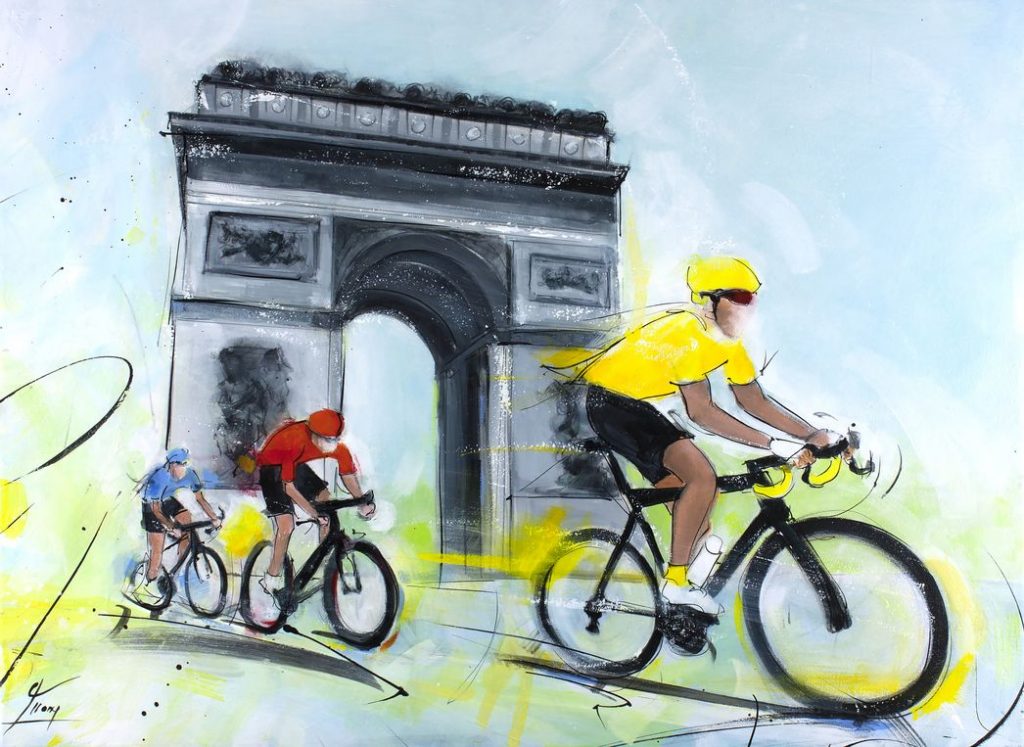 What does the Tour de France mean to you?
What does the Tour de France mean to you?
The Tour de France is the most prestigious cycling race, renowned for its rich history, challenging routes, and extensive media coverage. It stands as a unique event and a coveted goal for elite cyclists around the world, attracting their attention and dedication for decades.
– Why is it so important to you to the point of taking 16 times the start?
Undoubtedly, the primary motivation was to win the greatest cycling race in the history of the sport and compete against legends like Eddy Merckx and Bernard Hinault. Additionally, from a practical standpoint, racing and making a name for oneself in the Tour de France opened doors to participate in criteriums and other significant cycling events.-
What is the best memory of your career on the Tour de France?
Of course, the arrival on the Champs-Élysées in 1980 with the yellow jersey on my shoulders and the overall victory after 22 stages, 10 participations in the Tour de France, and 5 second places. Many Dutch supporters had traveled to Paris and cheered for me as I crossed the finish line, celebrating the victory with me. In those unique moments, you truly realize the difference between the winner and the second-place finisher.
What does the yellow jersey mean to you?
The yellow jersey is not only a symbol of performance but also a source of pride. It rewards years of hard work and perseverance required in high-level sports. Wearing the yellow jersey brings popularity and recognition, even though it doesn’t necessarily guarantee winning the Tour. It represents the pinnacle of achievement in cycling and serves as a testament to the dedication and talent of the riders who have earned the privilege to wear it.
– Do you have an anecdote that you would like to share?
II would choose the breakaway and the final sprint on the Champs-Elysées with Bernard Hinault, the leader of the overall cranking, and myself in second place on the 1979 Tour de France, leaving the peloton more than 2 minutes behind. Neither of us wanted to give up.
Watch the sprint between these 2 champions on www.ina.fr
Credit Image and painting: Lucie LLONG
Written by Sébastien DELOULE
